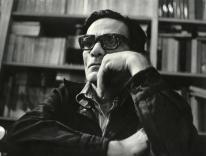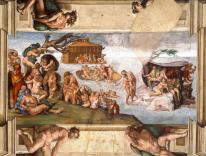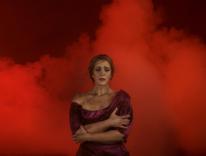Philadelphia is not always a city of brotherly love. It recently registered the highest number of homicides in the nation. That’s why my mother didn’t want me to travel there to photograph some of the 2,700 murals that now make Philadelphia the mural capital of the world.
Last summer, Time magazine (August 23, 2007) ran a short feature on Philadelphia’s Mural Arts Project (MAP) and how, over the last twenty years, it has changed the city’s visual landscape. By drawing together artists, inner-city neighborhood associations, and charitable trusts, MAP has helped to transform the city’s neighborhood wastelands. “Art saves lives,” says Jane Golden, MAP’s executive director. “Murals can play a catalytic role in healing the wounds of the city.”
Each mural that MAP commissions starts in the neighborhood itself. First there are meetings to discuss ideas for a given mural and to gather the needed signatures for an application to MAP. Once an application is accepted, there begins a long process that links a particular wall with neighborhood residents and an artist. The muralist is subsidized by MAP, but the ideas for the mural originate with people in the neighborhood, who frequently assist in the painting’s execution. Once the mural is finished, there is a community dedication ceremony and MAP turns over general upkeep to the neighborhood. As a result, people in the neighborhood have a permanent investment in the mural’s preservation and maintenance.
My efforts to photograph these works of art took me to the largely segregated neighborhoods of North, West, and South Philadelphia. These were once the haunts of my Irish grandparents. What I discovered—and what Time failed to report—is that many of Philadelphia’s murals portray religious faith, and do so in a very public way. Religious congregations of all sorts, as well as unaffiliated neighborhood associations, have creatively recorded their values and religious sensibilities in the neighborhoods’ common spaces. Many of the murals are larger-than-life representations of traditional religious themes. Tracking them down and photographing them became a kind of religious pilgrimage for me.
The images are often striking and prophetic. They deal with issues of racism, economic disparity, and violence, but they are also uncommonly beautiful, and their beauty seems to offer hope in otherwise blighted cityscapes. Not only churches, but also mosques and a variety of other religious organizations have gotten involved, using the outside of their buildings to present their theological vision to the world. Faith-based communities now constitute nearly 25 percent of the three hundred applications MAP receives each year. Here are just a few that I photographed.
Songs of Hope
One of the first murals I found was the five-story image on the side of Gateway to Heaven Ministries in the Mantua section of West Philadelphia. Gateway is a nondenominational storefront church, and the mural was funded in part by money from a federal antidrug initiative. The giant blue-green tableau was created by Donald Gensler, one of Philadelphia’s most accomplished muralists. It features a young boy in an oversized basketball jersey, looking toward the horizon. “Most of the young people in the city don’t have positive role models,” explained Rev. Cornell Smith, who founded Gateway ten years ago and worked closely with his congregation and Gensler to create a fitting image for their wall. “If ghetto is all you see, then that’s the mentality you’re going to have. This mural is a mural of hope. The young man is stepping out; he’s looking to the future. He has a goal and a vision in mind.” Although not explicitly religious, the image expresses the congregation’s sense of mission to the neighborhood.

“I didn’t know how to come in as an outsider and do a mural about drug addiction,” recalls Gensler. To bridge some of the gaps between himself and the congregation, he began attending services at the church. The mural combines an image of a young man testifying at a traditional tent revival with that of a boy playing basketball with his father. “The mural is not an advertisement for the church, or for spirituality,” Gensler explained. “Murals are most effective when the meanings are not so specific, when there can be multiple layers of interpretation.”
Rev. Smith’s interpretation is openly religious. He told me he sees the mural as underscoring the congregation’s role of bringing the “word” to the streets: “We’re here mainly to restore the community to Christ,” he said, “to restore unity to the community, and, most importantly, to put the fear of God back in the hearts of people so there won’t be so much violence.”
Born Again
Like the stained-glass and fresco illustrations in European cathedrals, Philadelphia’s murals tell stories that inspire reflection and response. But unlike the cathedral’s images, Philadelphia’s murals overlook not a hushed sanctuary but city streets full of noise, trash, and abandoned houses and cars. In such chaotic surroundings, their beauty is easy to miss. Yet that beauty can be all the more arresting when it is encountered unexpectedly as you turn a corner or gaze down a long alley. In fact, the urban context and the daunting conditions in which the murals are created enhance their impact.

A group of neighbors in South Philadelphia, most of them women, had commissioned Cliff Eubanks to create Born Again. They discussed with Eubanks images of children, natural beauty, and, as they stipulated, “something religious for a change.” The stunning two-story painting, an urban Madonna and Child, grew out of Eubanks’s ruminations on these criteria. An Africa-inspired sunset silhouettes a mother embracing her infant, surrounded by stained-glass depictions of the life of Christ. The Virgin gazes down on the mother from the upper-left corner; a crucified Christ hovers above the child in the upper right. Whether you stand a block away or directly below it, the mural takes you out of the immediate surroundings while simultaneously heightening them. This neighborhood is plagued by drugs. A young boy was shot to death around the corner while Eubanks was painting the mural in 2000. Yet, for the artist, the child in the mural represents hope. “You want your kid to evolve and grow into someone of power, someone who can rise above what is happening in the neighborhood,” Eubanks said. Looking at the mural, you sense the force of Eubanks’s vision.
The Families Are Victims Too
Public art is often placed in public spaces without much input from those who live there. Not in Philadelphia. In West Philadelphia, a support group for families whose members had been victims of violence approached artist Barbara Smollen and asked her to create a mural that would be both a memorial to the dead and a consolation to the survivors. After many meetings, Smollen presented the group with a design that had a political message and antiviolence themes. The families rejected it. “I was using the mural,” Smollen told me, “to wake up people to the problem of violence. But the families were saying no, these are our children...we want to honor them.” She eventually created a 300-foot-long mural that wraps around a local bus terminal and features small portraits of the dead, giant flowers in increasingly vibrant colors, and phrases of mourning and remembrance (see page 21). At the heart of the mural is a contemporary pietà, in which parents embrace a slain child draped in a red cloth. The mural has come to serve as a public emblem of the parents’ support group, which has obtained nonprofit status and works with the police to prevent neighborhood violence.

Doorways to Peace
Among the most remarkable murals in Philadelphia is the one created for the forty-year-old Al-Aqsa Islamic Society in North Philadelphia. For the mosque’s 250 families, MAP became a means of addressing the mounting animosity they experienced as Muslims after 9/11. Members of the mosque chose to make over the whole exterior of their nondescript five-story brick building. It was a tremendous challenge, not only for the mosque but for the muralists. To begin with, Islamic law forbids the use of images of people and animals. Complicating matters, the MAP muralists were Joe Brenman, a Jew, and Cathleen Hughes, a Catholic. From the start, interreligious dialogue became a prerequisite for the artistic process, as did the mosque’s outreach to the wider community. According to Adab Ibrahim, Al-Aqsa’s community liaison, “building up trust was the key issue in this project.”

A curriculum was developed that brought together students from Al-Aqsa, a neighborhood public elementary school, and a private school to study the idea of peace in the Abrahamic traditions. The students’ visions made their way to the mural on the south side of the building, Doorways to Peace. Al-Aqsa also hosted community days for people from all over the city. Those visitors joined with mosque members to paint hundreds of tiles with the ninety-nine names of Allah. Some are painted with geometric shapes; others are lettered in Arabic and English. The tiles became part of the building’s colorful new façade, in the style of the great mosques of the Islamic world. According to Ibrahim, “Our community is now ready for other things. When you do these kinds of things, doors open.”
The Journey: From Vietnam to the U.S.
The diversity of Philadelphia’s faith traditions impressed me each time I discovered new murals. The Journey was created by Shira Walinksy, working with members of the Bo De Buddhist Temple in South Philadelphia. The congregation and high-school students from Philadelphia’s University of the Arts worked to depict the memories of the city’s Vietnamese community in this large mural. It illustrates the ten central values of Vietnamese culture, which in turn are used to frame a ship crossing the sea to safety. The image also sparked interest from the neighborhood’s Mexican residents, who contributed hand-painted tiles depicting episodes from their emigration in the mural’s lower left side (not pictured). When the finished mural was dedicated last April, MAP’s Jane Golden noted that as Philadelphia and its neighborhoods experience economic and social change, “We need to hold onto our stories, our traditions, and our pasts.... This mural is a way to create meaning in the lives of Philadelphians.”

The MAP murals suggest that Philadelphia’s many religious traditions are a rich resource for bringing hope to a desperate urban landscape. When I think of the murals, of their visual energy and of the collaboration they inspired, I can’t help seeing them as a sign of an inner-city reawakening.
Please email comments to [email protected] and join the conversation on our Facebook page.
Share
Previous Story
Sibling Rivalries
Next Story
Evangelicals & Politics


